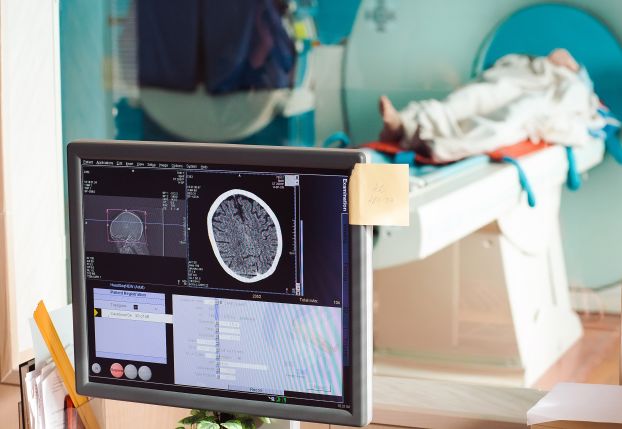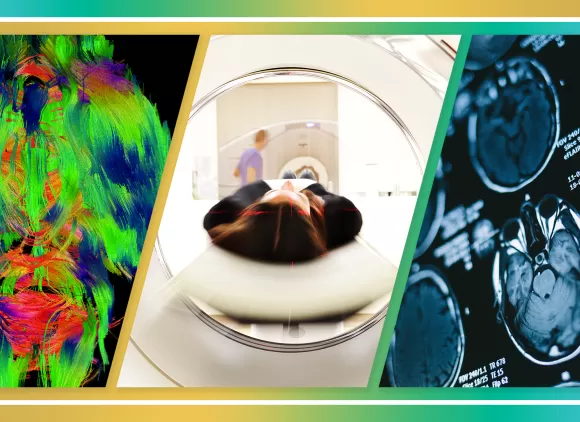
Credit: David Tadevosian/Shutterstock
Inside the looking glass
An MRI is a non-invasive imaging technique that uses a strong magnetic field and radio waves to create images of the body's internal structures — the brain, spinal cord, organs, nervous system, muscles and blood vessels.
As a diagnostic tool, MRIs are particularly useful in examining the non-bony parts, or soft tissues, inside your body. They can differentiate between normal and abnormal tissue without exposing patients to harmful radiation, unlike X-ray or computed tomography (CT) scans.
MRI technology relies on the physics of nuclear magnetic resonance, which describes how atoms react in the presence of strong magnetic fields.
In an MRI machine, a magnetic field aligns atoms within the body and radio waves disrupt that alignment. When the radio waves stop, the atoms return to their original position and emit signals that are converted into images on a computer monitor.
Learn more about MRI by exploring the National High Magnetic Field Laboratory's interactive tutorial.
Basic research begins
MRI technology is built upon decades of NSF-funded research in nuclear magnetic resonance, electromagnetics, biophysics, biochemistry and computer engineering that began in the 1950s.
During the 1970s, medical researchers and physical scientists — partially funded by NSF — developed the MRI imaging technique, culminating in the first full-body MRI scan in 1977. MRI machines became commercially available in the 1980s, becoming a staple of medical diagnostics across the nation.

Credit: U.S. Patent and Trademark Office

Credit: National Institute of Mental Health, National Institutes of Health
Fantastic fMRI
A critical advancement in MRI technology occurred in the early 1990s with the development of functional magnetic resonance imaging (fMRI), which measures blood flow in the brain to map brain activity.
Over the last three decades, numerous NSF-supported fMRI studies have improved diagnosis of neurological disorders like Alzheimer's disease, dementia and Parkinson's disease. They have also deepened researchers' understanding of how the brain works, from perception and motor control to memory formation and emotion.
Next-generation MRI
The newest generation of MRI technology relies on compressed sensing — a groundbreaking technique developed by NSF-funded mathematicians that dramatically speeds up scan times to up to 40 times faster than conventional methods.
While improving patient comfort, this technology also increases MRI access to patient populations previously difficult to scan, such as those with irregular heartbeats, those with dementia and children.
NSF continues to support MRI advances through research and instrumentation grants, including support for the NSF National High Magnetic Field Laboratory (MagLab), a facility that operates the world's most powerful magnets.
Credit: NSF MagLab

